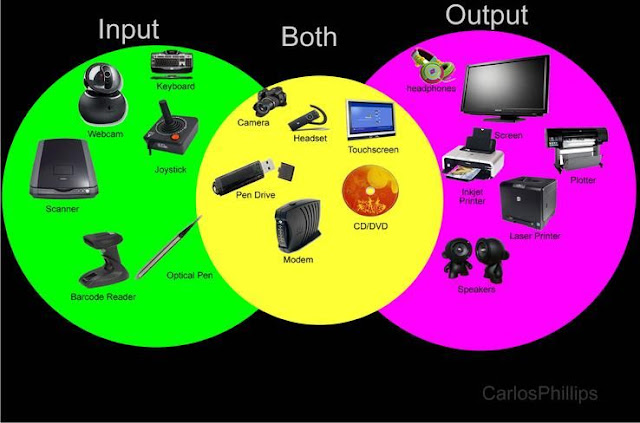AI Supercomputer
What does Artificial Intelligence (AI) mean?
The system has overall made itself four per cent more
efficient through reinforcement learning with its parent.
Definition - What does Artificial Intelligence (AI) mean?
Artificial intelligence (AI) is an area of computer science
that emphasizes the creation of intelligent machines that work and react like
humans. Some of the activities computers with artificial intelligence are
designed for include:
- Speech recognition
- Learning
- Planning
- Problem solving
Techopedia explains Artificial Intelligence (AI)
Artificial intelligence is a branch of computer science that
aims to create intelligent machines. It has become an essential part of the
technology industry.
Research associated with artificial intelligence is highly
technical and specialized. The core problems of artificial intelligence include
programming computers for certain traits such as:
- Knowledge
- Reasoning
- Problem solving
- Perception
- Learning
- Planning
- Ability to manipulate and move objects
Tapping the Next Generation of Supercomputers
And now we are at the point of convergence of Artificial
Intelligence technologies and supercomputing technologies. The result will soon
be part of the portfolio that companies providing computer systems (and Cloud
services) will offer to the industrial and business world.
An example of what will be on the market in a short while is
a part of the current Supercomputer Marenostrum of the Barcelona Supercomputing
Center (BSC). MareNostrum is the generic name used by the BSC to refer to the
different updates of its most emblematic and the most powerful supercomputer in
Spain, and until today four versions have been installed since 2004[23]. At
present, the Marenustrum is the most heterogeneous supercomputer in the world,
with all kinds of experimental hardware available on the market, since its
purpose is to serve as an experimental platform to design future
supercomputers.
This is structured in that the calculation capacity of the
current MareNostrum 4 is divided into two parts of totally differentiated
hardware: a block of general purpose and a block of emerging technologies. The
emerging technologies block is made up of clusters of three different
technologies that will be incorporated and updated as they become available.
These are technologies that are currently being developed in the United States
and Japan to accelerate the arrival of the new generation of pre-exascale
supercomputers.
One of these technologies is based on an IBM system designed
especially for Deep Learning and Artificial Intelligence applications[24]; IBM
has created all the software stack necessary for it. At the time of writing
this book, the hardware is available and the PowerAI[25] software package will soon
be installed, which will convert this supercomputing hardware into a machine
specially designed for Artificial Intelligence. Through this software, the main
frameworks of Deep Learning such as TensorFlow (and Keras, included in the
Tensorflow package), Caffe, Chainer, Torch and Theano will be available to
researchers of Artificial Intelligence.
In terms of hardware, this part of the Marenostrum consists
of a 54 node cluster based on IBM Power 9 and NVIDIA V100 with Linux operating
system and interconnected by an infiniband network at 100 Gigabits per second.
Each node is equipped with 2 IBM POWER9 processors that have 20 physical cores
each and 512GB of memory. Each of these POWER9 processors are connected to two
NVIDIA V100 (Volta) GPUs with 16GB of memory, a total of 4 GPUs per node.
The new NVIDIA V100 GPUs are the most advanced GPUs yet[26]
to accelerate Artificial Intelligence applications equivalent to 100 CPUs
according to NVIDIA[27]. This is achieved by matching their CUDA cores with 640
core tensor, which did not have the previous family of GPU Pascal from NVIDIA.
The core tensor is specifically designed to multiply two matrices of 4 × 4
elements in floating point format and also allows the accumulation of a third
matrix, thus being able to execute very quickly the basic operations of neural
networks both in the inference phase and training phase.
In addition, this new version of GPU updates the bus with
NVLINK 2.0[28]system that allows a high bandwidth with six links that can
transfer 50GBytes per second. Although traditionally the NVLINK bus was
originally designed to connect the GPUs, this version also makes it possible to
connect GPU and CPU. Another important element is access to memory, which has
improved compared to previous versions and allows bandwidths of up to 900
GigaBytes per second. Something awesome!.
A GOOGLE supercomputer has created an “AI child” which can outperform its man-made rivals.
 |
| The AI child can recognise people and object while watching a video in real time better than its man-made counterparts. |
The incredible machine named NASNet becomes smarter through
“reinforcement learning” which sees it report back to its “parent” computer
when completing tasks.
The AI (artificial intelligence), which was created earlier
this year, is able to recognise objects such as people and cars while watching
real time video.
NASNet is controlled by a neural network called AutoML which
was created by humans at Google Brain.
The parent AI teaches its offspring to do specific tasks
which are repeated thousands of times.
Researchers have found that NASNet is 82.7 per cent accurate
at predicting images correctly which means it has “outperformed all other
computer vision systems,” reports Science Alert.
 |
| Artificial Intelligence is becoming is becoming incredibly sophisticated and there are fears that the technology could destroy the human race. |
And because the system is “open source”, the Google Brain
team said they hope “the larger machine learning community will be able to
build on these models to address multitudes of computer vision problems we have
not yet imagined.”
But the rapid development of AI has sparked fears the
technology could destroy the human race.
Tesla CEO Elon Musk is one of those who has called for
artificial intelligence to be regulated because it poses a “fundamental risk to
the existence of human civilisation.”



